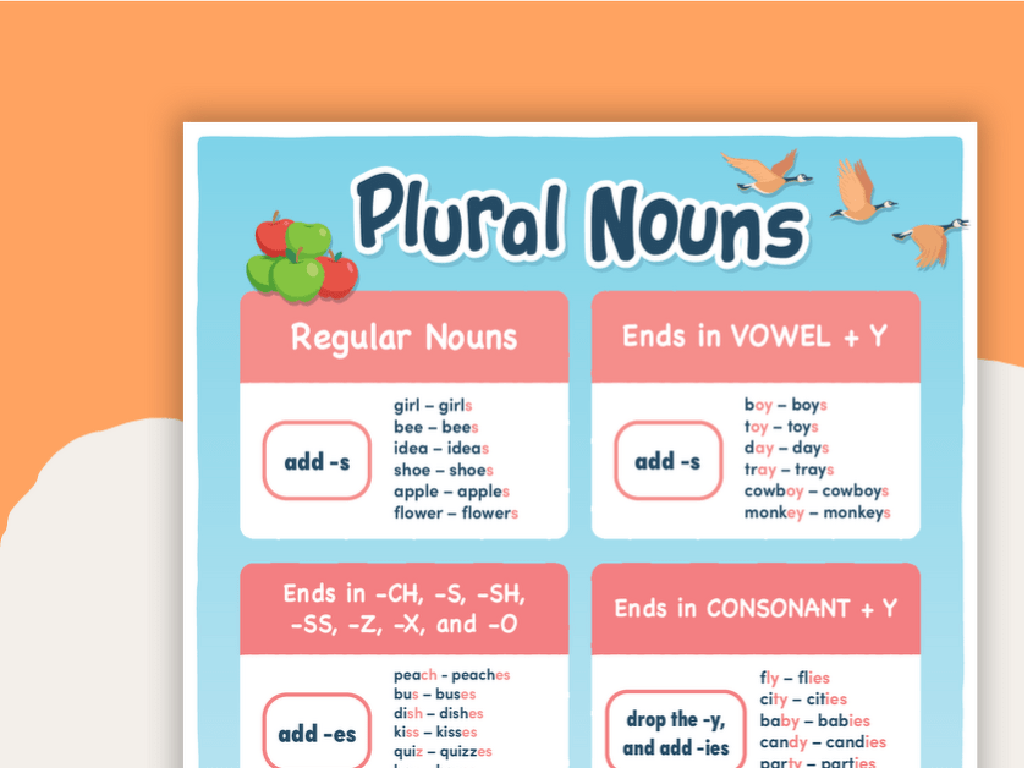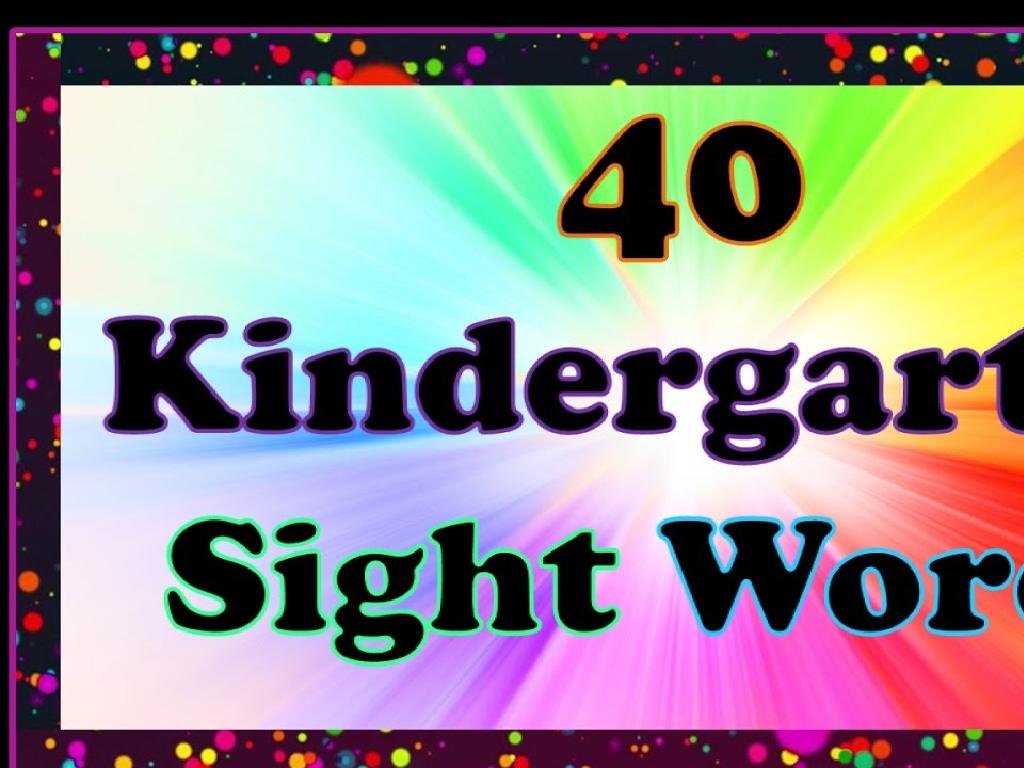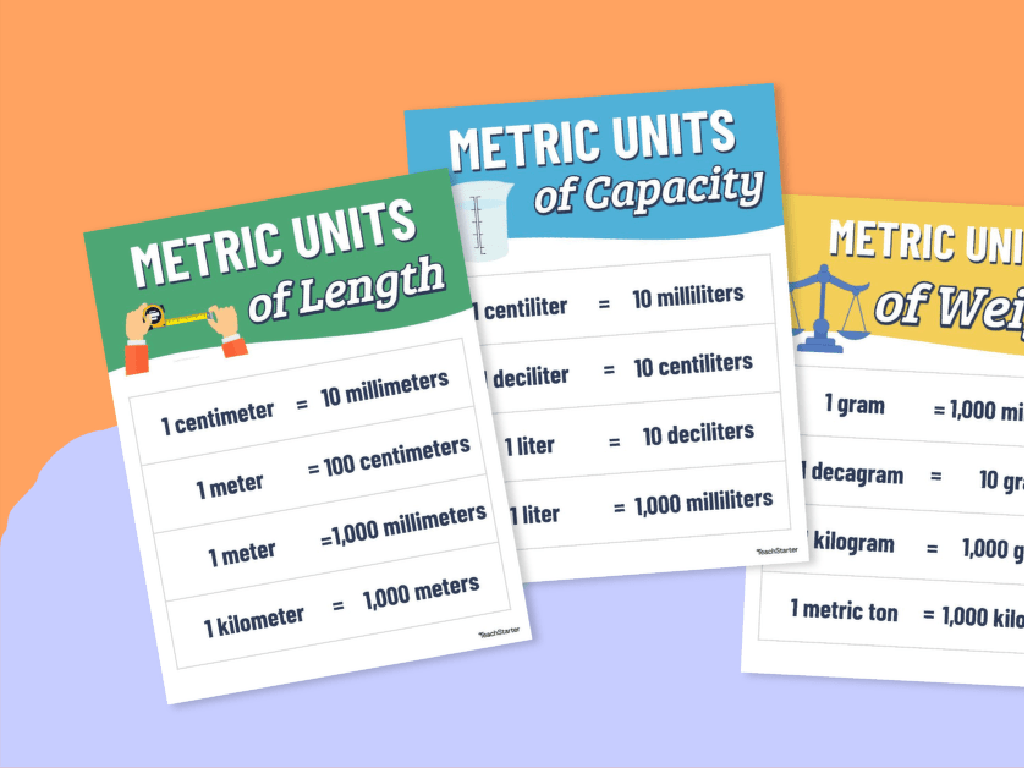Coin Names - Penny Through Quarter
Subject: Math
Grade: Kindergarten
Topic: Money
Please LOG IN to download the presentation. Access is available to registered users only.
View More Content
Welcome to Money Land!
– Learning about coins
– Coins help us buy things
– Names of different coins
– Recognizing penny, nickel, dime, quarter
– A penny is 1 cent, nickel is 5 cents, dime is 10 cents, and a quarter is 25 cents.
|
This slide introduces kindergarteners to the concept of money, specifically coins. Begin by explaining that coins are a form of money used to purchase items. Highlight the importance of recognizing and knowing the value of each coin. Use real coins or images to help students identify each type of coin: a penny, a nickel, a dime, and a quarter. Explain the value of each coin, emphasizing the color, size, and any distinct markings. Encourage the children to touch and hold the coins if possible, to familiarize themselves with the physical characteristics. Prepare to have enough coins for the next class for hands-on activities, such as coin sorting or matching games, to reinforce their learning.
Meet the Penny: Our Smallest Coin
– The penny is worth 1 cent
– Abraham Lincoln is on the penny
– Lincoln has been on the penny since 1909
– Penny is the smallest coin
– It’s smaller than a nickel, dime, and quarter
– Pennies are made of copper
– Copper gives pennies their unique color
|
This slide introduces the penny to Kindergarten students, helping them recognize and understand its value and characteristics. Start by showing them a penny and explaining that it is the smallest unit of money in the United States, worth 1 cent. Point out the image of Abraham Lincoln on one side, and explain that he was an important president. Highlight that the penny is the smallest in size and value compared to other coins like the nickel, dime, and quarter. You can also mention that pennies are made of copper, which is why they have a distinct color. Encourage the children to hold and look at a penny to become familiar with it. You can also introduce a simple activity where they count pennies or identify the coin among other coins.
The Nickel Tour
– A nickel is worth 5 cents
– Nickel is larger than a penny
– Compare size with a penny to see the difference
– Thomas Jefferson’s face on nickel
– Show a picture of Thomas Jefferson on the nickel
– Nickels are important coins
– Use nickels to count by fives
|
This slide introduces the nickel to the students. Start by showing them a nickel and explaining that it is worth 5 cents, which is the same as five pennies. Highlight the size difference between a nickel and a penny to give them a visual understanding. Show them the face of Thomas Jefferson on the nickel and explain who he was. Emphasize the importance of the nickel when counting money, especially in increments of five. You can use real coins or pictures to help the students visualize. Engage the students by asking if they have seen a nickel before and what they can buy with it.
Dive into the Dime
– A dime equals 10 cents
– Smaller size, greater value
– Though tiny, it’s worth more than a penny (1 cent) and a nickel (5 cents).
– Roosevelt’s face on the dime
– Franklin D. Roosevelt, the 32nd president, is pictured on the dime.
– Understanding dime’s worth
– Practice recognizing dimes and knowing they’re worth 10 pennies.
|
This slide introduces kindergarteners to the dime, a coin worth 10 cents. Emphasize that despite its small size, the dime holds more value than both the penny and the nickel. Show them a dime and point out the image of Franklin D. Roosevelt, explaining that he was an important president of the United States. Use hands-on activities to help students practice identifying the dime among other coins and understanding its value. For example, you can have them match dimes to the number 10, or count out 10 pennies and exchange them for a dime to reinforce the concept that a dime is worth 10 cents.
The Quarter Quest
– A quarter equals 25 cents
– That’s like 25 pennies!
– It’s the biggest of our coins
– It’s bigger than a penny, nickel, or dime
– George Washington’s face is on it
– He was the first president of the USA
– Quarters are important for money
|
This slide introduces the quarter, which is a fundamental coin in US currency. Emphasize that a quarter is worth 25 cents, which can be a fun fact for the kids as they can count up to 25 using pennies. Highlight the size of the quarter compared to other coins to help them identify it easily. Show them George Washington’s face on the quarter and explain that he was the first president, which can be a good history tie-in. Encourage the children to bring in quarters and practice identifying them. You can also play a matching game where kids match amounts of money with the correct number of quarters.
Let’s Compare Coins!
– Coins come in various sizes
– A penny is small, but a quarter is big
– Each coin has a unique value
– A penny is worth 1 cent, a quarter 25 cents
– Different coins for different amounts
– Use pennies and quarters to make 30 cents
– Recognizing coins by size and value
|
This slide introduces the concept of comparing coins to Kindergarten students. Start by showing them actual coins and pointing out the differences in size. Explain that the size of a coin often relates to its value, with larger coins generally being worth more. Use real-life examples, such as buying a small toy or a piece of candy, to illustrate how different coins can be used to reach the same amount of money. Encourage the students to touch and hold the coins to familiarize themselves with the physical characteristics. This tactile experience will help them remember the lesson. Have them practice by combining different coins to make the same total amount, reinforcing the concept of value and addition.
Coin Matching Game: Learning Coin Values
– Match coins to their values
– Identify the penny, nickel, dime, and quarter
– A penny is 1 cent, nickel is 5, dime is 10, quarter is 25
– Place coins on value labels
– Use real or play coins to match with labeled values
– Have fun learning about money!
|
This interactive game is designed to help Kindergarten students recognize and learn the values of different coins. Provide students with real or play coins and labels with the values of 1 cent, 5 cents, 10 cents, and 25 cents. Encourage them to pick up each coin and say its name and value before placing it on the correct label. This activity will reinforce their understanding of the penny, nickel, dime, and quarter. It’s a hands-on way to make learning about money engaging and fun. For the teacher: be prepared with enough coins and labels, and consider working in small groups to give each student ample opportunity to participate.
Class Activity: Coin Sorting!
– Sort coins into labeled jars
– Collaborate with classmates
– Recall each coin’s value
– A penny is 1 cent, nickel is 5, dime is 10, and quarter is 25
– Observe the appearance
– Notice size, color, and figures on coins
|
This activity is designed to help students recognize and understand the value of different coins by physically sorting them into jars. Each jar should be clearly labeled with the name of a coin: penny, nickel, dime, and quarter. Encourage the children to work together, fostering teamwork and collaborative learning. As they sort, they should be reminded of the value of each coin and its unique features, such as size, color, and the figures depicted on them. Possible variations of the activity could include matching the coins to items with corresponding price tags, using play coins for a mock store, or even a timed challenge to see which group can sort their coins the fastest while still being accurate.
Celebrating Our Coin Knowledge!
– Fantastic work learning coins!
– Understanding money is practical.
– Money is used to buy toys, snacks, etc.
– Practice coin identification at home.
– Use real coins or play money for practice.
– Recognize coin values with family.
– Learn the difference between 1¢, 5¢, 10¢, 25¢.
|
This slide is meant to wrap up the lesson on coins and encourage the children to continue practicing at home. Reinforce the concept that money is used in everyday life to purchase goods and services. Encourage parents to involve children in simple transactions to help them recognize and value coins. Provide examples of activities, such as sorting coins into piles by type, using coin counting jars, or playing store games where they can ‘buy’ and ‘sell’ items using play money. The goal is to make learning about money fun and interactive, reinforcing the concepts taught in class.






